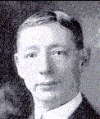A prominent trio of this wonderful drug is: Bag-like swelling under the brows, the 3 a.m. general aggravation, and the wandering stitching pains. Wandering stitching pains through, and coldness of, the chest are very striking of Kali c. It is a splendid remedy for pneumonia of children, and after measles. Speaking of children reminds us of that king of childrens remedies, we refer to:.
Ipecacuanha: Whose identification mark is: Constant anxious nausea, with clean tongue, and whose essentials, including the above mark, are: Thirstlessness; gagging, choking, rattling and inclination to vomit. Add to these: A dreadfully pale, sickly countenance; blue rings around the eyes;; anxiety; drawn nose; dangerous dyspnoea; coarse rattling that can be heard all over the room; a dry, racking, teasing, suffocative cough that causes redness of the face; gagging and choking even without nausea; restlessness and a prostration that comes in spells. The Ipec. cases are often ushered in by nausea and vomiting; come on earlier and do not have the coldness of Act. t.; and rather correspond to the stage of irritation, while Ant. t. corresponds to the stage of relaxation. As Ant. t. relates more to the later stages, we will omit it and pass on to:.
Arsenicum Album: Whose identification mark is: Irritability of fibre, anxiousness and restlessness, burning and prostration, and whose essentials, including the above mark, are: Extreme chilliness, desires the body kept warm and the head cool; general aggravation after midnight, especially 1 a.m.; fears death and must have company. Add to those: A restlessness of mind and body that requires a constant change of position or of beds; heat outside, cold inside; extreme thirst, drinks little and often; his expectoration either rusty or liver colored; the secretions acrid and of a putrid odor; and the case passing rapidly into exhaustion and collapse. Lastly, of those acute remedies, while we could go on and on and on, we will here stop at:.
Phosphorus: Whose identifications mark is: Exhaustion of mind and body, and whose essentials, including the above mark, hot weather, change of temperature, sweets, wetting hands especially; better: warmth and warm applications except head and stomach. Add to these: Sensitive to all external impressions; desire to be rubbed; always tired; better after sleep; fan-like motion of alae nasi; great thirst for ice cold drinks, which may be vomited as soon as they become warm on the stomach; desire for cold food which relieves the stomach; anxiety and oppression as of a load on the chest; chest tight; violent stitching pains in left chest; better lying on right side, cannot lie on left side; cough with expectoration of bright red blood, blood-streaked, rusty, or purulent mucus, in later stages, thick, yellow, sweetish. Phos., like Ant. c., Lyc. and Sulph., is more apt to be indicated in the later stages than the acute, but it is sufficiently acute to be mentioned prominently in the acute class.
We think the above remedies are brought out sufficiently clear to avoid confusion, and if not given too often or too low, should reduce both complications and deaths to a minimum. The whole science and art of homoeopathic prescribing lies not alone in ones knowledge of the various remedies and how to distinguish between them, but in knowing to elicit the proper indications for the remedy from the patient.
TOLEDO, OHIO.
Prof. Hoppe, of the University of Basle, an allopath, says that “the two great events in medicine, since the early ages, have been these discoveries of Hahnemann:.
“1st. That for every individual case of disease, the specific remedy–the individual specific remedy–must be sought for, and found, and that thus, in every individual case of disease, the process of cure is a process of discovery.
“2nd. The discovery of Hahnemann, that the remedy acts in small, very small, doses, in smaller doses than anyone has hitherto imagined, and that in these very small doses it may act more powerfully than in large doses. A discovery which surpasses in brilliancy all of Hahnemanns other achievements.”–J. T. TEMPLE, M. D., 1868.

